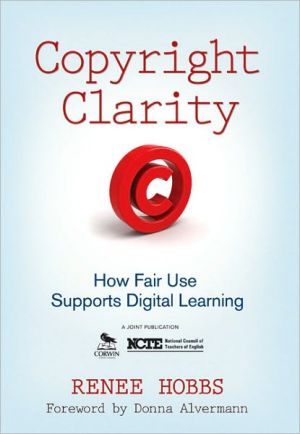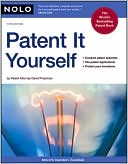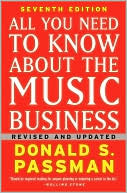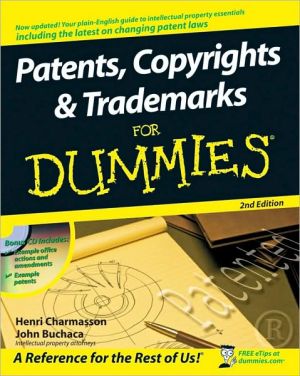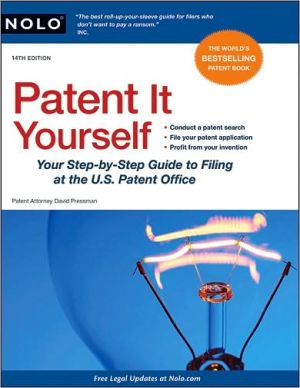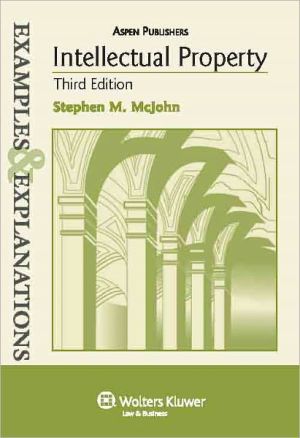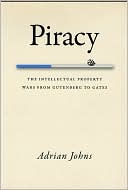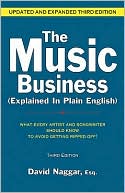Copyright Clarity: How Fair Use Supports Digital Learning
This jargon-free guide clarifies principles for applying copyright law to 21st-century education, discusses what is permissible in the classroom, and explores the fair use of digital materials.
Search in google:
Finally, a book that dispels the confusion around the use of copyrighted materials in the classroom!Wonderfully rich educational resources-in both print and digital form-are often avoided in classrooms because educators are confused about copyright issues. In this slim, jargon-free guide, media literacy expert Renee Hobbs dispels common myths and clarifies principles for applying copyright law and the doctrine of fair use to 21st-century teaching and learning. Complete with a ready-to-go staff development workshop, this book explores:The meaning of fair use and how it empowers teachers Guidelines for determining what content can lawfully be used in the classroom Examples of the fair use of digital materials, including YouTube videos, audio clips, and much more
Foreword viiPreface ixAcknowledgments xAbout the Author xii1 Copyright Matters for 21st-Century Learning 1Educators and Students Use Copyrighted Materials 2Why Do Educators Care About Copyright and Fair Use? 5From Copyright Confusion to Copyright Clarity 6Transformativeness: It Will "Shake Your World" 8Building Consensus Among Educators 9What You Can Expect From This Book 112 Dispelling Copyright Confusion 15What Is Copyright? 17The Purpose of Copyright 18The Power of Fair Use 19Copyright Confusion 20The Consequences of Copyright Confusion 24Fair Use as a User Right 26The Problem With Educational-Use Guidelines 27Beware of Charts and Graphs 28Fair Use and the Marketplace 31Copyright, Fair Use, and Online Learning 32Industry-Sponsored Copyright Misinformation 343 Users Have Rights, Too 39New Instructional Practices Proliferate 40The Political and Educational Value of Copying 41Authorship and the Romantic Ideal 43Understanding Transformative Use 44Comparing and Contrasting Photographs: An Online Production Project 49Inspired by Harry Potter 54The Issue of Market Impact 55Making Copies for Whom? For What Purpose? 564 Fair Use and Digital Learning 63Are Educators Up for the Challenge? 65Communities of Practice Define Fair Use 66Creating a Code of Best Practices for Educators 68What About Permissions? 73Attribution: Giving Credit Where Credit Is Due 76Teaching About Copyright and Fair Use 77Using Copyrighted Work to Make Something New 805 The Future of Copyright 83Unlocking the Power of Film in Education 84The Ironies Resulting From Technology Shift 87The Future of Intellectual Property: Three Views 89What's at Stake: The Future of Education 94Resource A Leading a Staff-Development Workshop on Copyright and Fair Use 97Resource B Excerpts From Copyright Law 105Endnotes 111References 120Index 125
\ Henry Jenkins“This bookcuts right to the heart of uncertainties about how copyright and fair use apply in the classroom—confusions that block many valuable pedagogical interventions. Hobbs offers the information straight, addressing common misperceptions and laying out the current understandings of intellectual property law in clear, engaging prose.”\ \ \ \ \ Diane Lapp"This long-awaited book is exactly what has been needed to relieve educators’ anxieties about the legality of using copyrighted materials during instruction and presentations. In addition to answering questions about fair use practice in an easy-to-understand manner, Hobbs offers examples of how Internet and communications technologies support essential literacy and communication skillsin 21st-century classrooms. This slender text is a must-read for every educator independently or as a professional development choice."\ \ \ Suzanne Libra"This book is provocative, readable, and well written. It will make educators think about their practices and framework. Recommended."\ \
